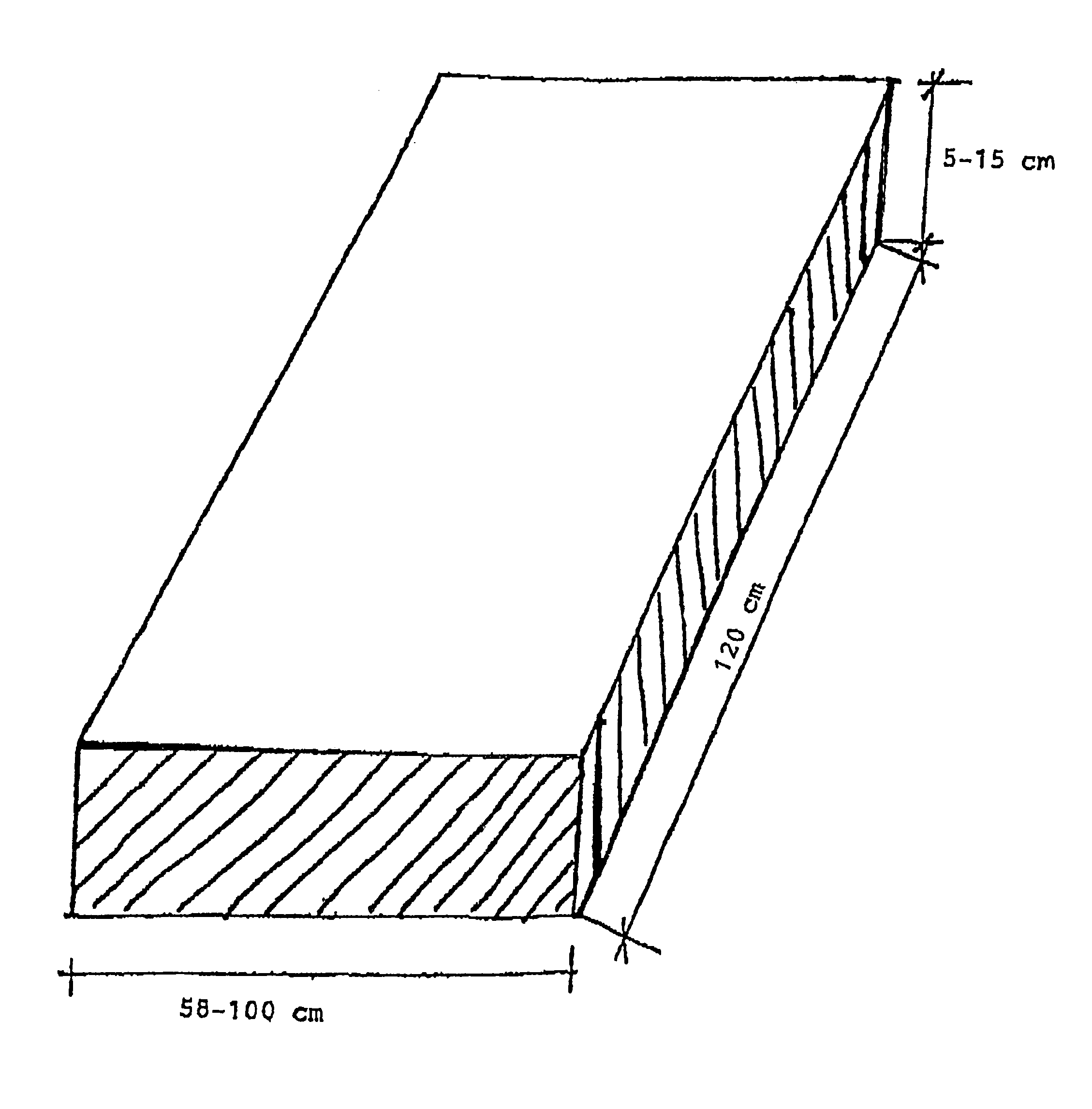Environmentally friendly insulating material and method for manufacture thereof
a technology of insulating material and environment, applied in the field of environmental friendly insulating material, can solve the problems of inability to meet the needs of building insulation, so as to reduce the amount of waste and emissions of climate gases, and require a relatively small amount of energy during production. , the effect of saving energy
- Summary
- Abstract
- Description
- Claims
- Application Information
AI Technical Summary
Benefits of technology
Problems solved by technology
Method used
Image
Examples
Embodiment Construction
[0024]The invention will now be described in greater detail with reference to FIG. 1 and a preferred embodiment.
[0025]FIG. 1 illustrates an example of an insulating mat according to the invention.
[0026]An example of the production of a preferred insulating mat.
[0027]Collected used clothes, so-called scrap cloth, was torn to pieces in a Picker 800 machine. The machine also picked out buttons, zips, metal buckles etc. from the fabric remnants. The torn-up fabrics were then passed to a three-cylinder shoddy machine. The shoddy machine shredded the fabric remnants into fabric fibres, or so-called shoddy. The shoddy was passed to a weight distributor where approximately 15 percent by weight polyester and 20 percent by weight flax fibres, based on the total weight of the mass, were added to the shoddy before the addition of 2.5 kg of Station 1 fire-retardant agent per cubic metre of fabric mass. After weighing, the mass (shoddy, flax fibres, polyester and fire-retardant agent) were passed...
PUM
| Property | Measurement | Unit |
|---|---|---|
| mass | aaaaa | aaaaa |
| melting point | aaaaa | aaaaa |
| melting point | aaaaa | aaaaa |
Abstract
Description
Claims
Application Information
 Login to View More
Login to View More - R&D
- Intellectual Property
- Life Sciences
- Materials
- Tech Scout
- Unparalleled Data Quality
- Higher Quality Content
- 60% Fewer Hallucinations
Browse by: Latest US Patents, China's latest patents, Technical Efficacy Thesaurus, Application Domain, Technology Topic, Popular Technical Reports.
© 2025 PatSnap. All rights reserved.Legal|Privacy policy|Modern Slavery Act Transparency Statement|Sitemap|About US| Contact US: help@patsnap.com


